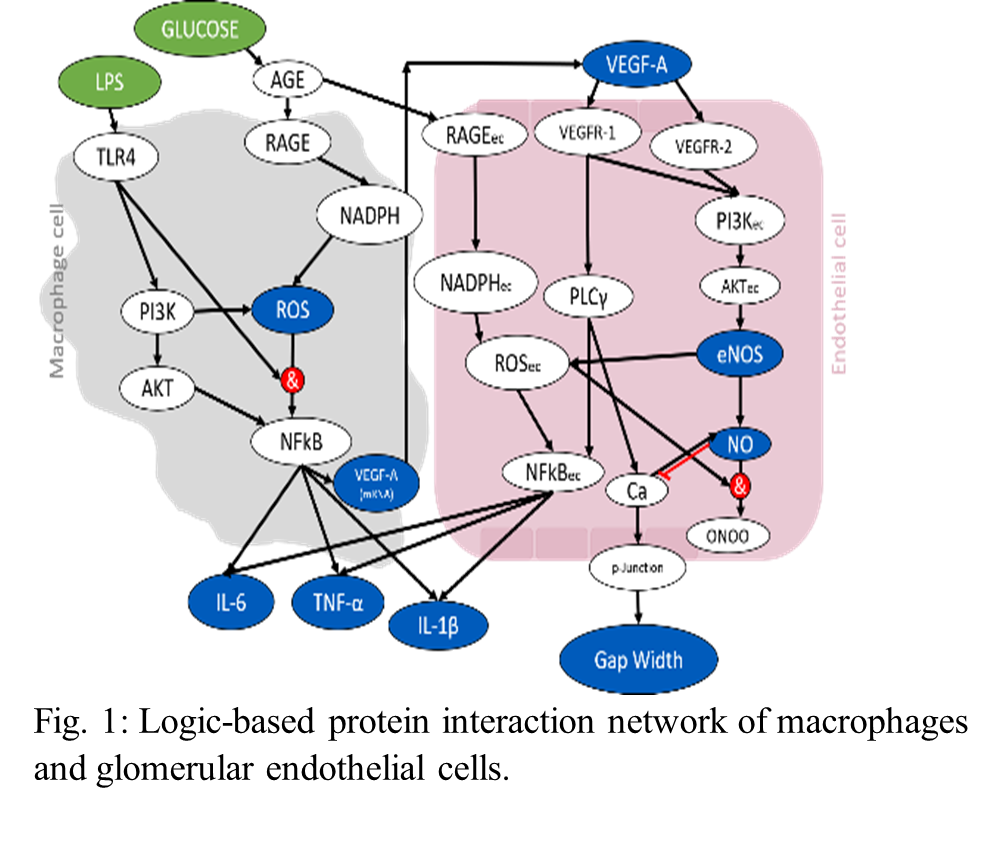2022 Annual Meeting
(694d) A Logic-Based Modeling Study of Glucose Mediated Immune Response in Diabetic Kidney Disease
Method: Immune cell crosstalk with glomerular cells in the kidney is studied via a protein signaling network, which is conceptualized using an open-source software package CellNOptR1. The network is modeled into a continuous logic-based model by integrating logical rules and normalized-Hill type ODEs in NetFlux2 software package. The model behavior is governed by two input stimuli, glucose and lipopolysaccharide (LPS) with a value between 0 and 1 based on whether stimulus is inactive, partially active, or fully active. The model equations are governed by reaction and species parameters, where interactions between species are governed by normalized-Hill activation or inhibition functions. The model response is trained and validated against available biochemical data from cell co-culture3 experiments, and simultaneously model parameters are optimized using a multi-start non-linear least squares optimization technique. The model also takes into account minimization of parameter subspace by careful selection of sensitive model parameters for optimization as well as minimization of prediction error and parameter uncertainty.
Results: The presented biochemical and logic-based network model yields a semi-quantitative time-dependent response to the glucose and LPS stimuli. It provides an insightful link between glucose-dependent fluctuations in glomerular endothelial cell fenestration size, uncoupling of nitric oxide synthase (eNOS/NO) pathway, competitive VEGF receptor activation. Unlike biochemical models, this modeling approach overcomes the unavailability of mechanistic details and rigorous parameter estimation. Model evaluation tests suggest that our dual-cell network is consistent with literature and a subset of model predictions are also validated against data from in vitro experiments for short-term exposure to glucose. The immune response model is responsive to intermittent glucose exposure in diabetic mice, and ongoing efforts are made to validate glucose-mediated long-term immune response against in vivo data.
Conclusion: This model aids the understanding of cellular damage through pathway analysis and dependencies, even with limited biochemical data. Further, the results suggest that the proposed network model can be used to study the effects of molecular perturbations on cellular scale damage and may be useful in targeting disease progression.
References: 1Terfve et al. BMC Systems Biology 2012, 6:133. 2 Kraeutler et al. BMC Systems Biology 2010, 4:157. 3Li et al. Nephron. 2021, 5:145
Acknowledgment: This work was supported by NIH grant R35GM133763, NSF grant 2133411, and the University at Buffalo.
